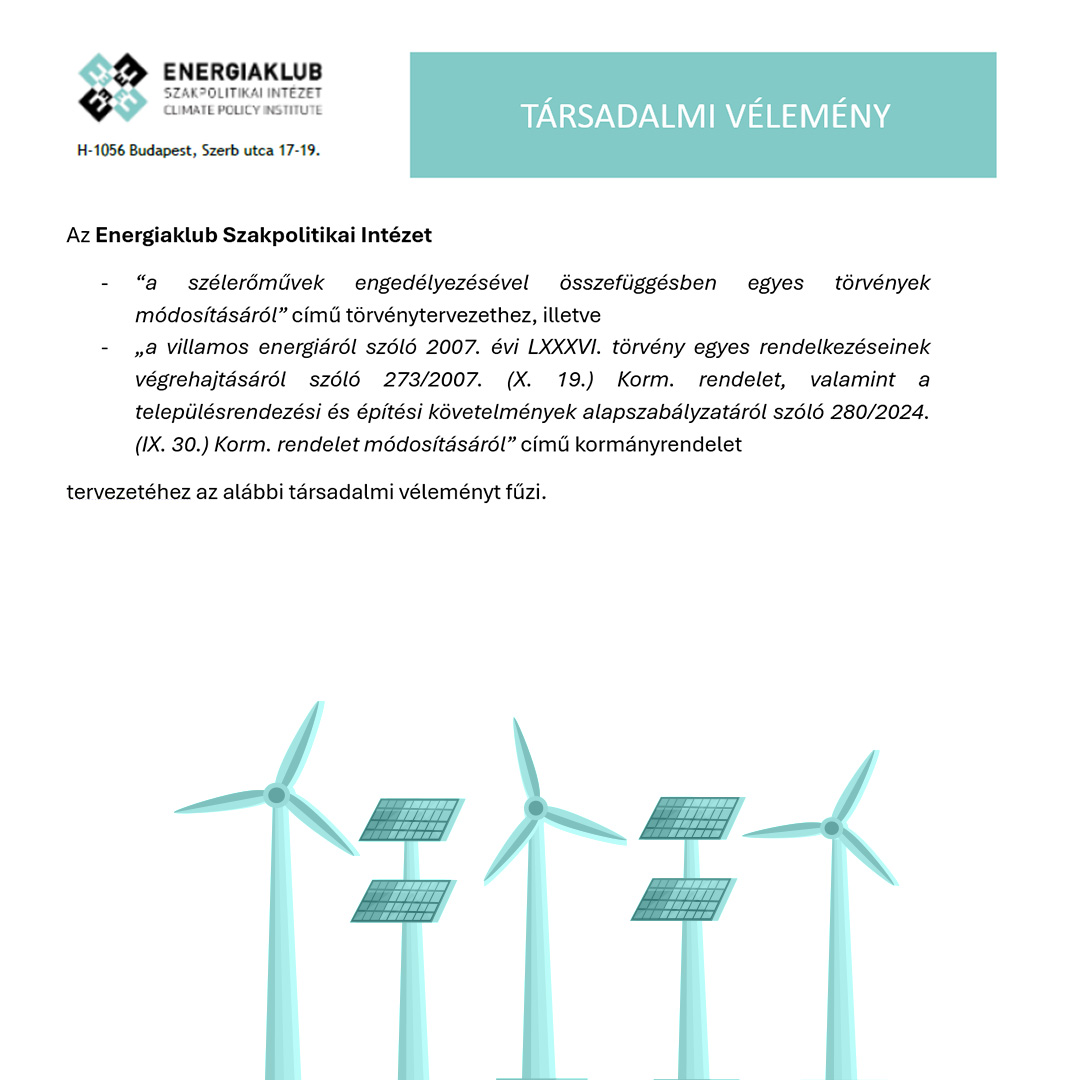Wind Energy: Real Potential, Real Barriers
The Energiaklub Climate Policy Institute has submitted a public opinion on the draft law on the authorisation of wind turbines and the related amendment to the government decree. Our opinion focuses on enabling the use of the best available technology, rationalising spatial restrictions, and removing regulatory barriers that hinder the realisation of wind energy's full potential.
Wind turbines could play a key role in Hungary’s energy transition—complementing solar power—as they offer a clean, affordable, domestic source of energy that contributes to energy sovereignty and climate targets. However, wind energy development in Hungary has virtually come to a halt over the past 15 years, partly due to regulatory barriers. It is therefore encouraging that the government’s current draft legislation aims to ease some of these restrictions—however, further amendments will be needed to ensure the objectives can be met.

Height limits are too low, spatial restrictions too narrow
In its current form, the draft law would only allow the construction of modern 199-meter wind turbines in designated “facilitated zones,” while in other areas the outdated 130-meter height limit would remain in force. This—in contradiction with the goals outlined in the preamble—would continue to pose a significant barrier to new projects. Moreover, the 199-meter height limit also falls short of today’s modern, efficient and cost-effective turbines, which often reach 220 to 240 meters in height.
We recommend that the legislation allow the use of advanced technology exceeding 199 meters, at least in the facilitated zones, and that it raise the permitted height in all other areas to at least 180 metres. This would significantly improve both the economic feasibility and the capacity utilisation of wind energy investments.
The current criteria for designating facilitated zones are also overly restrictive: according to the draft, wind turbines could only be built in districts where a small-scale wind power permit had previously been issued. This would apply to just 17 districts, leaving out many areas of the country—such as parts of Western Hungary—where wind conditions are much more favourable. As a result, those regions with the highest potential for cost-effective wind energy production would be excluded.
We recommend that the designation of facilitated zones be based primarily on wind potential, rather than on previous administrative permits. This would ensure technological and economic rationality.
Further obstacles: radar, landscape, and heritage protection
The installation of wind turbines is currently hindered by a number of additional regulatory barriers: military radar zones, as well as landscape and heritage protection restrictions, which are often ambiguous or disproportionately strict. For example, in the case of military radars, international practice applies significantly smaller safety distances, which should be reconsidered in Hungary as well. As for landscape protection, clear and transparent regulation is needed to make it evident which areas are subject to it.
We recommend a review of the legislation that currently hinders wind turbine deployment, involving professional organisations and relevant market actors in the process.
Realistic wind targets require realistic regulation
As acknowledged by the Ministry of Energy, wind power is an excellent complement to solar power on both daily and seasonal levels. However, the current regulatory environment threatens even the relatively modest 2030 target of 1 GW wind capacity—while, given the anticipated growth in solar capacity, it is already urgent to integrate at least 6 GW of wind power into the system.
Our core position is clear: restrictions on wind energy must be eased urgently and systematically—otherwise Hungary risks failing to meet its renewable energy targets, energy sovereignty objectives, and climate commitments.
The full text of our opinion (in Hungarian) is available here: Társadalmi véleményünk a szélerőművek engedélyezésével kapcsolatban (PDF)







